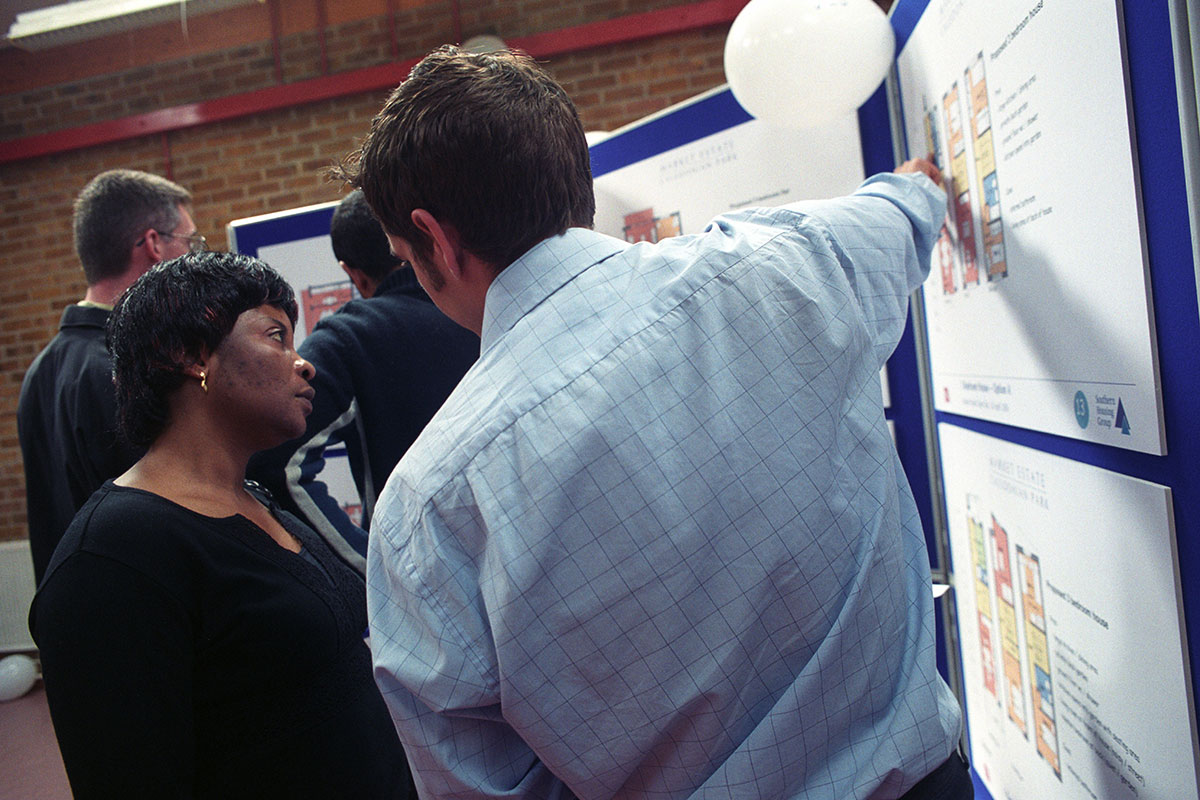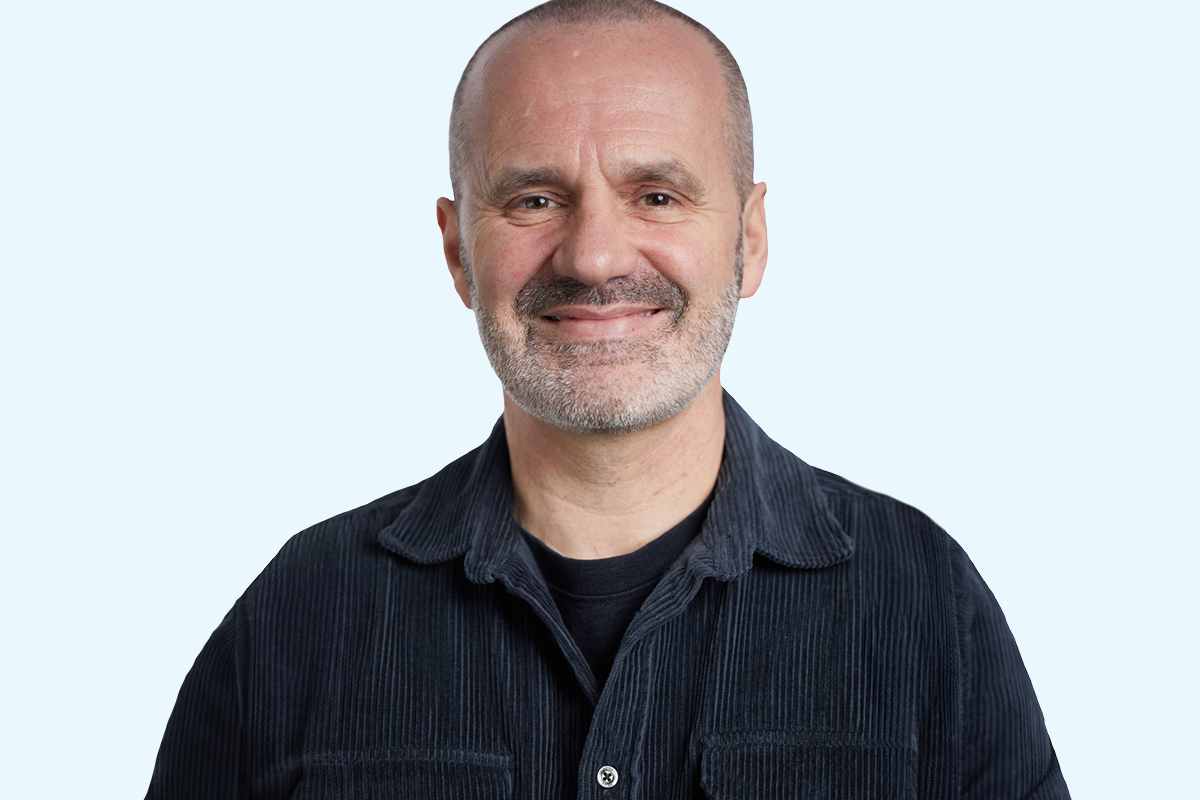CPD module: co-production
What is co-production, how can it be fostered, and what are the potential benefits of getting it right? Kate Walsh, Jennie Shrewsbury and Victoria O’Donoghue at SYHA explain how the concept can be applied successfully to social housing

Inside Housing CPD content

Every issue of Inside Housing now features certified continuing professional development (CPD) content.
This is part of Inside Housing’s commitment to helping the sector reach the new professional standards required by the Social Housing (Regulation) Act.
It means that every issue of the magazine enables readers to gain CPD hours.
There are two Inside Housing CPD programmes. Emerging Leaders is for anyone relatively new to the sector, providing a grounding in several key issues.
The Essential Insights programme is for all levels of housing professional.
For more information, and to find out about upcoming content, visit www.insidehousing.co.uk/cpd
About the authors
Kate Walsh is programme manager for the co-production and peer support service – Changing Futures Sheffield at SYHA. She has worked at SYHA since 2008 in various homelessness and supported accommodation projects. She took up her current role in February 2022. The service she manages trains people with lived experience of multiple disadvantage in peer mentoring or co-production work in Sheffield.
Jennie Shrewsbury is programme lead of the Good Practice Mentor programme at SYHA. Previously, she worked as programme lead for the co-design team, supporting staff to bring customer voice into their work. Her current role shares learning from the Ageing Better project. She works with organisations to deliver co-production training, as well as providing support for reducing loneliness and social isolation.
Victoria O’Donoghue is associate co-production lead at SYHA. She facilitated the SYHA-led co-production project on behalf of the Ageing Better programme. This brought together the learning of the 14 Ageing Better partner areas and led to the creation of the Stronger Together toolkit on co-production.
Learning outcomes
After reading this article, learners will be able to:
- Describe the characteristics of co-production
- Cite some of the essentials for successful co-production
- Detail some of the common mistakes that are made with co-production
- Explain how the pitfalls and mistakes that commonly occur with co-production might be avoided or overcome
- Explore to what extent their organisation is successfully engaging with citizens and truly co-producing, drawing on Arnstein’s Ladder of Citizen Participation model
- Have a sense of which further learning would be helpful and ideas for additional reading and reflection
Co-production has become an increasingly popular concept in social housing. Centred on the idea of sharing power between citizens and service providers, it is seen as a potential means of creating services that more effectively meet the needs of the people who use them.
Since many different activities can come under the umbrella of co-production, the term can seem confusing. It can be difficult to know how to truly share power with customers and citizens, moving beyond more tokenistic consultation or involvement. This article explores the key principles of co-production and considers how to get co-production right. It draws on work at South Yorkshire Housing Association (SYHA).
What does co-production actually mean?
Co-production is a term which means different things to different people, and which can be used to describe an array of different types of work. Fundamentally it comes down to the idea of doing things with a group of people, rather than doing things to them.
Staff at SYHA have been involved in a broad range of projects with strong co-production elements. This includes Ageing Better Sheffield, a programme funded by The National Lottery Community Fund to explore how to help people over 50 live happier, healthier lives. That programme concluded in 2022, and the Good Practice Mentor programme at SYHA now shares and supports the learning developed during Ageing Better. The organisation is also part of Changing Futures Sheffield, a national programme aiming to improve outcomes for adults experiencing multiple disadvantage.
Through this work, SYHA staff have concluded that it is more helpful to define the core principles and values that characterise co-production rather than the term itself. If a project – or any part of a project – embodies a set of four principles, it is considered to be part of the organisation’s co-production work. Those principles are:
- Sharing power – this means professionals and non-professionals work together to achieve a good outcome. The approach is collaborative and it is recognised everyone has something valuable to contribute.
- Reciprocal relationships – everyone involved in the work must benefit from their involvement. People must get something back for having put something in.
- Involving lived experience – the project must involve people with lived and learned experience to which the project relates. In the context of social housing, this primarily means residents (referred to as ‘customers’ at SYHA), but could also mean family members and/or unpaid carers of those customers. It might also entail speaking to customers of other local services.
- Working together towards a common purpose – all those working on the project must be united in a shared purpose, which they all agree on and are all invested in.
This definition approach can help avoid an ‘all-or-nothing’ attitude to co-production. While the gold standard for co-production would involve co-design, co-delivery, co-commissioning, co-governance and co-evaluation, the pressures under which social housing teams work means that is not realistic in every instance. Focusing on the principles rather than the activities means co-production is seamlessly included in a much wider range of settings and pieces of work. It also helps engender a sense that co-production can and should be part of everyone’s work, rather than being seen solely as the responsibility of one specific team or department.
How can successful co-production approaches be built?
- Ensure values, principles and ‘the why’ are clear – before asking customers or citizens to get involved in a project, consider the expected benefit of that involvement for this piece of work. What is it that will be different or better by virtue of co-producing this project? How does this tie to the values and principles of the organisation? Which voices need to be present to gain value from the process and how will they be involved?
- Consider what everyone needs to contribute to the best of their abilities – SYHA adopts a strengths-based approach to all its activity. This can be summed up as focusing on ‘what’s strong rather than what’s wrong’. It means finding ways to incorporate everyone’s skills and abilities. Different people will need different levels of support to make the best possible contributions to a co-production project. While a Teams meeting may be a daily occurrence for someone working within a housing association, for a citizen it may be a new experience. It may also not be an accessible one, perhaps due to a lack of internet access, data and/or a reliable device.
Assuming knowledge or access immediately makes for a power imbalance. Instead, it is important to think through what will make everyone feel equally comfortable within a setting. That might involve having a preparatory meeting for the customers and citizens who have volunteered to get involved in a project. That meeting could run through exactly what the project will entail; which members of staff are involved and what roles they have; explaining any acronyms or abbreviations that will be commonly used; and offering advice on whichever technical platforms might be used. - Make conscious choices about the spaces used, and how professionals occupy those spaces – a boardroom may feel like an uncomfortable or adversarial setting, particularly for someone who has never worked in an office-based environment. Wherever possible, it is better to use more open, collaborative, relaxed spaces for co-production work – and preferably to go to people in the spaces they use rather than expecting them to come into the organisation’s environment.
Professionals should also consider how they present themselves in these settings. Removing a lanyard is a quick and easy way to visibly erase a sense of ‘them and us’ and emphasise that everyone is equal. Alternatively, if everyone needs to have an ID badge, make sure that visitors are provided with lanyards. - Consider psychological needs – learning from someone’s lived experience is powerful, but people may find it challenging to talk about it. It is important to be psychologically informed in all co-production work, considering the vulnerabilities that people bring with them. The danger is that someone becomes overwhelmed to the point of no longer being able to participate effectively. Checking in with people, and not putting too much on anyone’s plate at one time, is helpful.
- Encourage questions – questions should be encouraged, and crucially from staff as well as from volunteers. There are so many perspectives on, and definitions of, co-production that colleagues might feel unsure about exactly what is expected or be apprehensive about the process.
- Try to make every encounter and conversation count – a visit from a maintenance team to someone’s property can be an organic chance to understand what is important to somebody. Resident engagement and co-production should not be considered as something separate to the day-to-day work of the business.
- Get comfortable with being uncomfortable – by definition, co-production means professionals giving up some of their power. That can be difficult – it is a big shift for anyone who has become used to being in charge. Power-sharing also opens up the potential for challenge. It can be difficult to hear this sort of feedback. What is important to remember is it is being offered with a view to improving things for everyone – there is rich information if you are willing to listen.
- Accept that getting it wrong is part of getting it right – co-production is about testing and learning, about finding what does work and what doesn’t, and being exposed to learning that would never have been gained without giving something a go. Going in with the best possible intentions is important, but there can be unforeseen consequences.
A good example is when staff at SYHA visited a soup kitchen to speak to people with experience of street homelessness. As recompense for sharing their experiences, volunteers were given a supermarket voucher. In time, word got around the soup kitchen that these vouchers were available and people came to the SYHA employee asking what they had to do to get one. The concern was that people were – entirely understandably – volunteering to share their story because it was a means to get a voucher they desperately needed rather than because they necessarily wanted to share their story to improve services.
Staff haven’t worked out a way around this, but the learning is important. It wouldn’t have emerged without trying to engage people in this way and will inform future projects. It is important to acknowledge that an organisation cannot force someone to be interested in co-production. Different people have different priorities.
Avoiding the tokenistic: Arnstein’s Ladder of Citizen Participation
In the mid-1960s, an official within the US Department of Housing, Education and Welfare took on the role of chief advisor on citizen participation. As part of her new job, Sherry Arnstein designed guidelines to involve members of local communities in planning and policymaking.
She summarised what she had learned in a 1969 article published in the Journal of the American Institute of Planners. Entitled ‘A Ladder Of Citizen Participation’, the article describes levels of citizen access to decision-making.
The middle rungs of the ladder are entitled placation, consultation and informing – all of which Ms Arnstein argues are tokenistic means of engaging citizens. She suggests true citizen power only comes once an organisation moves higher up the ladder (with partnership, delegated power and then, the top rung, citizen control).
Many, including staff at SYHA, still use Arnstein’s ladder in thinking about how best to approach co-production. It is particularly helpful in questioning whether proposed customer or citizen involvement is merely tokenistic, or if it will have a real impact.
What are the benefits of getting co-production right?
At its best, co-production can reveal important considerations which would never previously have emerged – leading to services that more appropriately meet customer needs. A good recent example is the development of a new move-on facility for homeless women in Sheffield, which will offer residents two years of accommodation and support. When architects and designers drew up plans, the intention was for each room to have only a single bed – they concluded this was the best way to use the space available. But all the lived experience volunteers involved in the co-design process pointed out that it would feel infantilising to be expected to sleep in a single bed every day for two years. A decision that would inadvertently have sent a negative message about the way in which service users were being viewed was therefore changed.
What are common co-production mistakes or pitfalls? How can they be avoided?
- Tokenism – there is the danger that co-production, or more specifically involving service users in a process, becomes a tick-box exercise. True co-production is not tokenistic.
- Lack of a feedback loop – anyone who volunteers their time on a co-production project should receive clear feedback on what happened as a result of their input – even if it was, for instance, that a project was paused to reconsider how best to implement considerations that emerged during the co-production process. This feedback is an important part of reciprocity and of ensuring everyone feels valued.
- A failure to allow an appropriate amount of time and resources – there is no point in allocating time at the beginning of a project to listen to the customer voice if there is no time or resource to make changes to a project as a result. To have a successful co-production element, more time and staff resource will be needed than for a project without such an element, so plan accordingly.
- A failure to appropriately compensate people for their time – any staff member attending a co-production activity is, by definition, compensated as their time is recognised within their salary. Lived experience volunteers must also receive recompense if the relationship is to be reciprocal (a central principle of co-production). Appropriate recompense entails asking what would make a difference for that individual. Some biscuits during a consultation meeting is insufficient.
Some people may like a payment, and given the choice may prefer well-being vouchers to money. The concern for many is that payments can affect their benefits, so if in doubt, it is worth checking with the Department for Work and Pensions on how best to pay an individual.
For others, offering access to skills training may be most important – gaining expertise through the co-production work that then leaves them better placed to seek employment. This could involve linking people up with careers coaches or local colleges. It could also involve considering whether there are opportunities to extend someone’s involvement in co-production, bringing them onto other projects.
Expenses also need to be considered. Covering childcare fees, or travel fees, can ensure a wider range of people are able to engage in co-production work and is part of fair recompense. - Depending on ‘the usual suspects’ – a diversity of voices is central to good co-production. It is easy to fall into the trap of inviting the same people every time – people who have engaged in the past. But they cannot represent every voice, and often may not actually be the voices of the people who need to be heard.
How can housing associations broaden the range of people involved in co-production?
Meeting people where they are is central to good co-production. That does not only mean considering what someone needs to help them make their best contribution. It should also be taken literally. Staff need to leave the office and meet people in their own environments, in the spaces where they live and socialise. For instance, as part of the Ageing Better programme – which was led by SYHA – a ‘roving reporter’ went out in public spaces and interviewed people about their opinions on age-friendly cities. It was an important means of listening to the voices of people who might not otherwise have been heard.
Collaborating with organisations that already have relationships with those whose voices need to be heard can also be helpful.
Areas to reflect on
- Where do you think your organisation’s co-production work ranks on Arnstein’s Ladder of Citizen Participation? Do you find the ladder a useful tool? Could it help inform conversations about co-production in your organisation?
- Which of the common pitfalls outlined in this article sound most familiar to you? How has reading this article changed how you might approach them in future?
- Can you think of projects in your own organisation that have been improved through a co-production element? What difference did it make?
- What one point in this piece do you want to share with colleagues who may not have read it? How will you share it?
Summary
Co-production involves providers of services sharing power with the users of the services, in a reciprocal relationship, and everyone working towards a common purpose. Done well, it can lead to better provision and more successful outcomes for those living in social housing. Effective co-production requires focusing on a set of common values, supporting citizen volunteers to contribute to the very best of their abilities, offering volunteers appropriate compensation for sharing their expertise, and allocating sufficient time and resource to the process. It is not a process without obstacles or unintended consequences, but the learning gained along the way can be really valuable – and often wouldn’t be possible to gain in any other way. The outcome and impact is generally richer as a result.
Now take an online test about what you have just read and earn CPD minutes
Click here to answer a selection of questions about this article and earn CPD minutes
Get all the questions correct and you will receive a certificate confirming your award of 30 CPD minutes within 10 working days via email.
Find out more about Inside Housing’s CPD offering by clicking here.
References and further reading
- Arnstein, S. (1969), ‘A Ladder of Citizen Participation’, Journal of the American Institute of Planners
- Woodall, J., Davison, E., Parnaby, J., Hall, A-M., (2019), Meeting of Minds: How co-production benefits people, professionals and organisations, The National Lottery Community Fund
- Stronger Together – A co-production toolkit from Ageing Better













